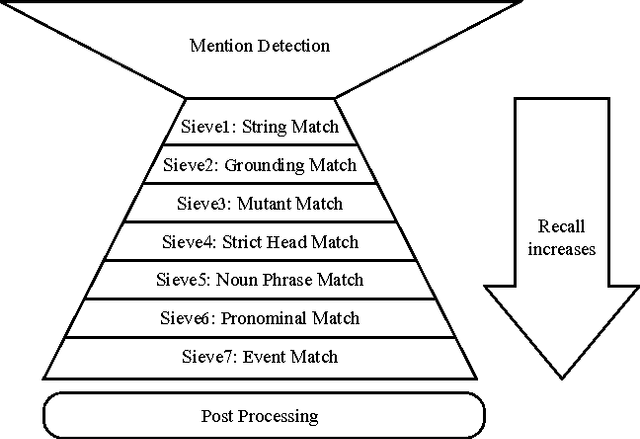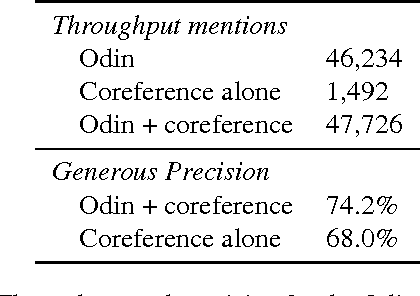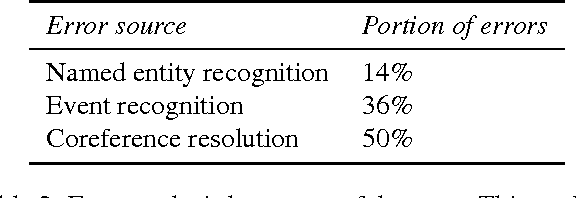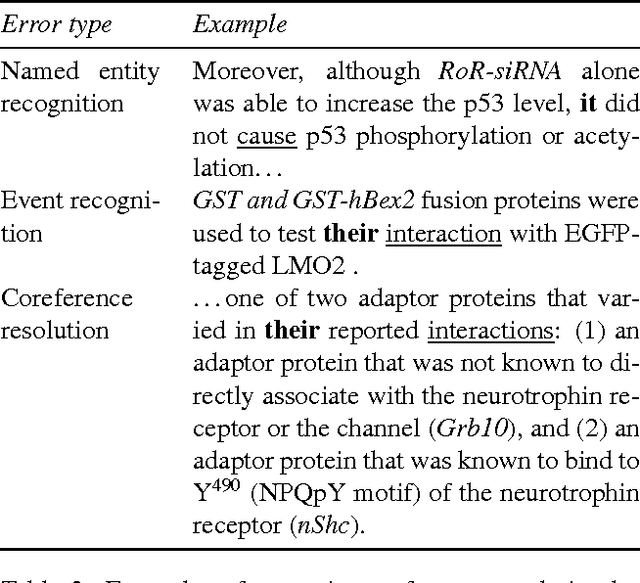Sieve-based Coreference Resolution in the Biomedical Domain
Paper and Code
Sep 02, 2016



We describe challenges and advantages unique to coreference resolution in the biomedical domain, and a sieve-based architecture that leverages domain knowledge for both entity and event coreference resolution. Domain-general coreference resolution algorithms perform poorly on biomedical documents, because the cues they rely on such as gender are largely absent in this domain, and because they do not encode domain-specific knowledge such as the number and type of participants required in chemical reactions. Moreover, it is difficult to directly encode this knowledge into most coreference resolution algorithms because they are not rule-based. Our rule-based architecture uses sequentially applied hand-designed "sieves", with the output of each sieve informing and constraining subsequent sieves. This architecture provides a 3.2% increase in throughput to our Reach event extraction system with precision parallel to that of the stricter system that relies solely on syntactic patterns for extraction.
 Add to Chrome
Add to Chrome Add to Firefox
Add to Firefox Add to Edge
Add to Edge